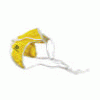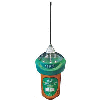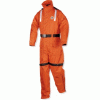Canadian Boating Safety Requirements
Download a PDF copy of the Safe Boating Guide from Transport Canada
Finally, the Safe Boating site is a user-friendly site that is helpful in describing the gear required by law, as well as optional equipment recommended for maximum safety.
Our tables below do not include requirements for vessels greater than 24 metres in length; refer to the sites above.
NOTE: For a pleasure craft more than six (6) meters in length and up to twelve (12) meters in length, the number of pyrotechnic distress signals referred to below may be reduced up to a maximum of 50%, provided the number of smoke signals does not exceed 50% of the permitted number of smoke signals, if the pleasure craft is equipped with:
a) A means of two way radio communication which can include a cell phone. If a VHF marine band radio then the operator requires a Restricted Operator Certificate (Maritime) (ROC(M); OR
b) A 406 MHz personal locator beacon, that is the subject to the technical acceptance certificate, worn by the pleasure craft operator; OR
c) A 406 MHz emergency position-indicating beacon.
• For Sail and Power boats over six (6) meters in length and up to nine (9) in length: three (3) pyrotechnic distress signals, not more than one (1) of which is a smoke signal.
• For Sail and Power boats over nine (9) meters in length and up to twelve (12) meters in length: six (6) pyrotechnic distress signals not more than two (2) of which are smoke signals.
| Requirements* | Sailboard / Windsurfer | Paddleboats and watercycles less than 6 m (19’8”) in length | Human-powered Vessels (Canoes, kayaks, rowboats) less than 6 m (19’8”) in length | Personal watercraft (PWC) |
| One (1) Canadian-approved personal flotation device or lifejacket of appropriate size for each person on board | y | y | y | y |
| One (1) buoyant heaving line no less than 15 m (49’3”) in length | n | n | y | n |
| A reboarding device if the freeboard of the vessel is greater than 0.5 m (1’8”) | n | n | y | |
| An anchor with no less than 15 m (49’3”) of cable, rope or chain in any combination | n | n | n | n |
| One (1) manual propelling device | n | n | n | n |
| One (1) Class 5BC fire extinguisher | n | n | n | n |
| One (1) bailer | n | n | y (one of either, unless it is a watertight vessel) | n |
| One (1) manual water pump fitted with or accompanied by sufficient hose to enable a person using the pump to discharge water from the bilge of the vessel over the side of the vessel | n | n | ||
| A watertight flashlight | y, if vehicle is operating between dusk and dawn | y, if vehicle is operating between dusk and dawn or in reduced visability conditions | n, if vessel is less than 8m | y (one of either) |
|
Three (3) Canadian-approved flares of Type A, B or C |
n | n | ||
| A sound-signalling device or a sound-signalling appliance | y | y | y | y |
| Navigation lights that meet the applicable standards set out in the Collision Regulations | n | n | y, if vehicle is operating between dusk and dawn | y, if vehicle is operating between dusk and dawn or in fog. |
| Radar reflector († see note below) | y | n | y | y |
| Magnetic Compass | Pleasure craft propelled by oars and pleasure craft 8 m (26’3”) or less in length within sight of navigational marks do not require a compass. | |||
* Some items are not mandatory if all people on board are wearing a Canadian approved flotation device of the appropriate size, or if the vessel is engaged in a competition. Visit Transport Canada's site for the final word!
| Sail and Powered Pleasure Craft: | Up to 6 m (19’8”) in length | From 6 m (19’8”) in length but no greater than 9 m (29’6”) in length | From 9 m (29’6”) in length but no greater than 12 m (39’4”) in length | From 12 m (39’4”) in length but no greater than 24 m (78’9”) in length |
| One (1) Canadian-approved personal flotation device or lifejacket of appropriate size for each person on board | y | y | y | y |
| One (1) buoyant heaving line no less than 15 m (49’3”) in length | y | y, one of either | y | y |
| One (1) approved lifebuoy that is attached to a buoyant line no less than 15 m (49’3”) in length | n | y | y (buoyant line may be substituted with a self-igniting light) | |
| A reboarding device if the freeboard of the vessel is greater than 0.5 m (1’8”) | y | y | y | y |
| An anchor with no less than (#) of cable, rope or chain in any combination | y (one of either) (#) = 15 m (49’3”) |
y (one of either) (#) = 15 m (49’3”) |
y (#) = 30 m (98’5”) |
y (#) = 50 m (164’1”) |
| One (1) manual propelling device | n | n | ||
| One (1) Fire extinguisher | y* (5BC) | y** (5BC) | y** (10BC) | y*** (10BC) plus two (2) buckets, each with a capacity of 10 L or more |
| One (1) axe | n | n | n | y |
| One (1) bailer | y, one of either³ | y, one of either³ | n | n |
| One (1) manual water pump fitted with or accompanied by sufficient hose to enable a person using the pump to discharge water from the bilge of the vessel over the side of the vessel | y, one of either | n | ||
| Bilge pumping arrangements | n | n | y | |
| A watertight flashlight | y, one of either (3 flares, Type A, B, or C) if the boat is equipped with a motor² | y | y | y |
|
Canadian-approved flares |
y, 6 flares, Type A, B, or C.² | y, 12 flares of Type A, B, C or D (no more than 6 of Type D)² | y, 12 flares of Type A, B, C or D (no more than 6 of Type D)² | |
| A sound-signalling device or a sound-signalling appliance | y | y | y | y, appliance only. Vessels over 20m require a horn and fitted bell |
| Navigation lights that meet the applicable standards set out in the Collision Regulations | y¹ | y¹ | y | y |
| Radar reflector(†) | y | y | y | y |
| Magnetic Compass | Pleasure craft propelled by oars and pleasure craft 8 m (26’3”) or less in length and within sight of navigational marks do not require a compass or a compass bearing device. | y | y° | |
¹Sailing vessels less than 7 m in length can meet this requirement with a watertight flashlight. Also, all vessels are exempt if not operated before sunrise, after sunset or in times of restricted visibility.
² Exempt from carrying pyrotechnic distress signals if:
- Operating in a river, canal or lake in which it can at no time be more than one nautical mile (1.852 km) from shore OR
- Engaged in an official competition or in final preparation for an official competition and has no sleeping arrangements
³ A bailer or manual bilge pump is not required for a pleasure craft that cannot hold enough water to make it capsize or a pleasure craft that has watertight compartments that are sealed and not readily accessible.
°Certain requirements exist depending on your boat's age (before/after July 2002). Confirm with Transport Canada's site.
†Radar reflectors are required for boats under 20 m (65’7”) and boats that are built of mostly non-metallic materials. A radar reflector is not required if: (1) the boat operates in limited traffic conditions, daylight and favourable environmental conditions, and where having a radar reflector is not essential to the boat’s safety; or (2) the small size of the boat or its operation away from radar navigation makes having a radar reflector impractical.
*1 Class 5BC fire extinguisher, if the pleasure craft is equipped with an inboard engine, a fixed fuel tank of any size, or a fuel-burning cooking, heating or refrigerating appliance
**One (1) Class BC (size indicated in chart) fire extinguisher, if the pleasure craft is a power-driven vessel, plus another class BC (size indicated in chart) fire extinguisher if the pleasure craft is equipped with a fuel-burning cooking, heating or refrigerating appliance
***One (1) Class 10BC fire extinguisher at each of the following locations:
At each access to any space where a fuel-burning cooking, heating or refrigerating appliance is fitted
At the entrance to any accommodation space
At the entrance to the machinery space




 Proudly Canadian, est. 1999.
Proudly Canadian, est. 1999.
























